Leafcutter bees life cycle. The bee obtaining pollen on cosmos flowers, as well as recognizing their breeding habits to save the bees.
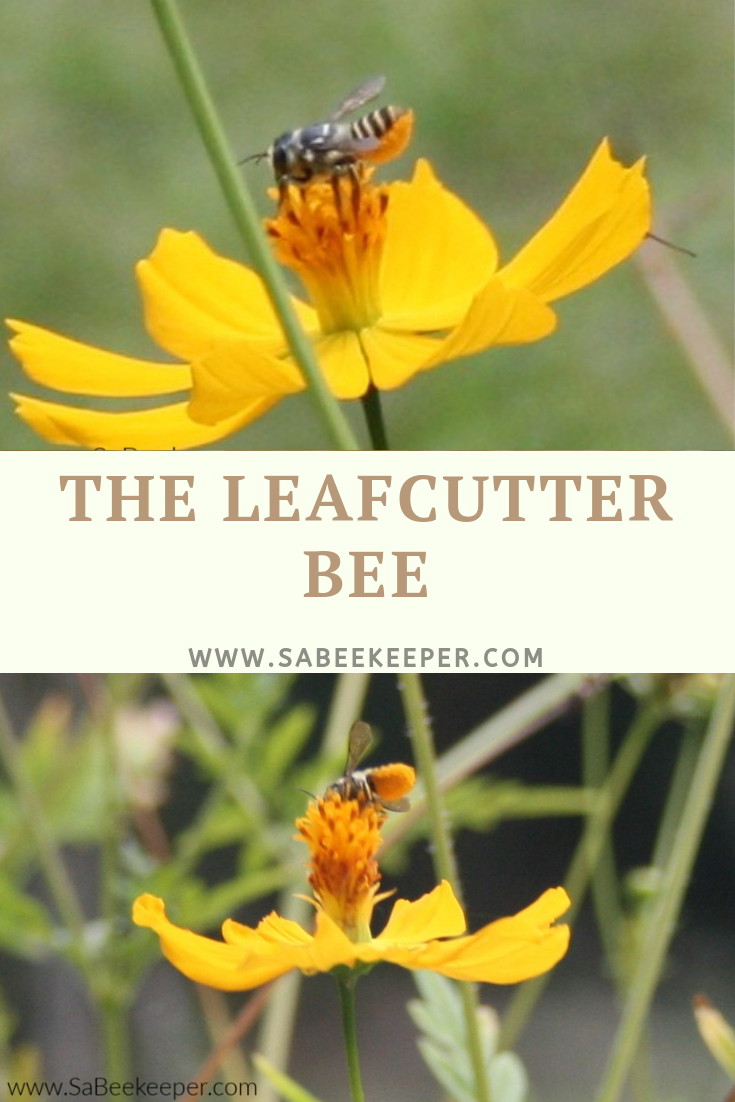
The Leafcutter Bees Life Cycle.
A beautiful example of, the yellow bottom of abdomen, of a leafcutter bee, on the garden cosmos flowers. I found they have a larger body than a normal honey bee.
How they breed and obtain pollen.
Here this Darker species black and white striped is just one of the species found.
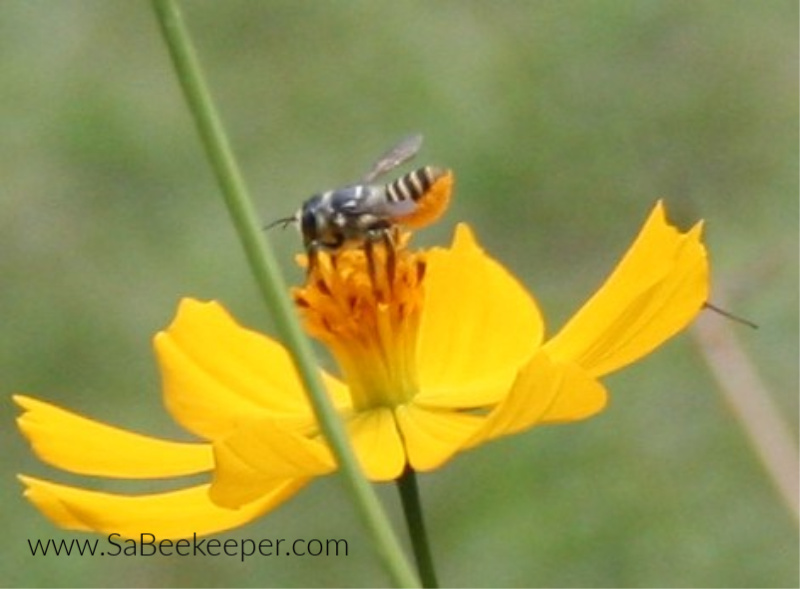
The bee is very similar to a normal honey bee, slightly a little bit bigger. Their lower abdomen is yellow.
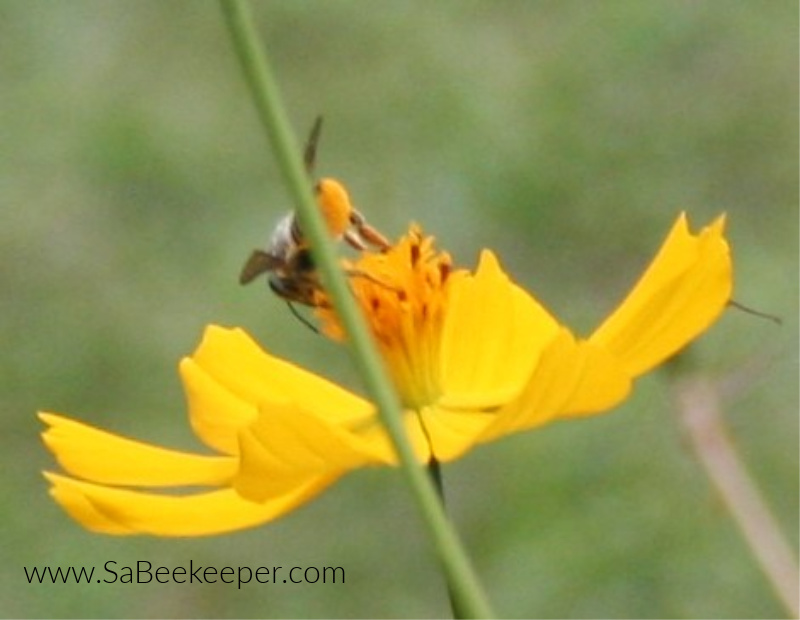
Very distinctly different to the normal bee. They are solitary bees and do not have a queen bee or a hive.
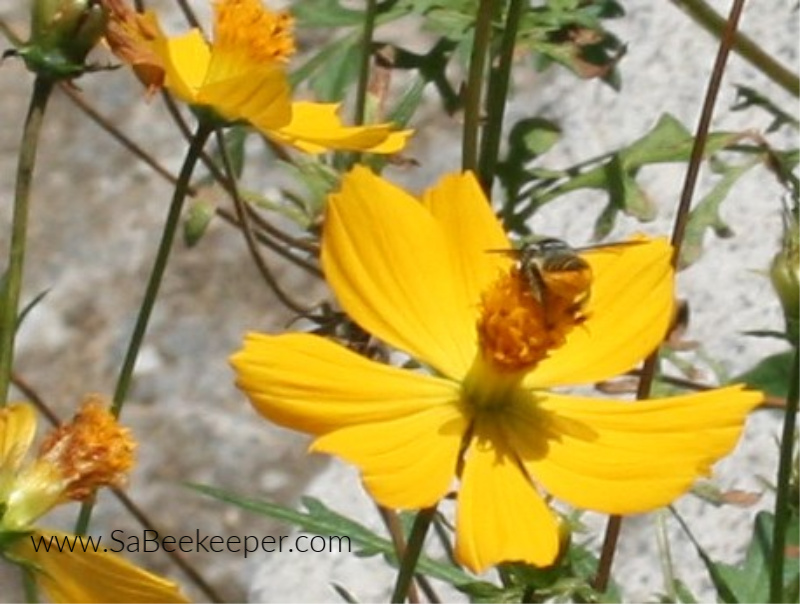
They don’t produce honey nor bees wax.
How they breed.
In the wild they build their nest in holes in dead trees or in the tubes of reeds, spinning the pieces of leaves in a tube, and sealing them off with small pieces of cuts of leaves.
Below; Bee carrying pieces of leaves.

The female leafcutter bee divides her leaf tunnels in reeds into chambers and divides them up and then lays her single egg, supplies some pollen/nectar mix as food for the egg laid there. Then closes it up with thin piece of leaf. She continues in this way till she fills the site she obtained. Sealing with a few pieces of leaves to protect against predictors.
The larvae hatching eats the food and stays in this tube for a period of hibernation.
It will spin a cocoon until it pupates, hatches. Normally in spring or early summer. They emerge an adult bee in 6 to 8 weeks.
Below; Rolled leaves to make a tunnel for egg laying. Leaf cutter bee nests.
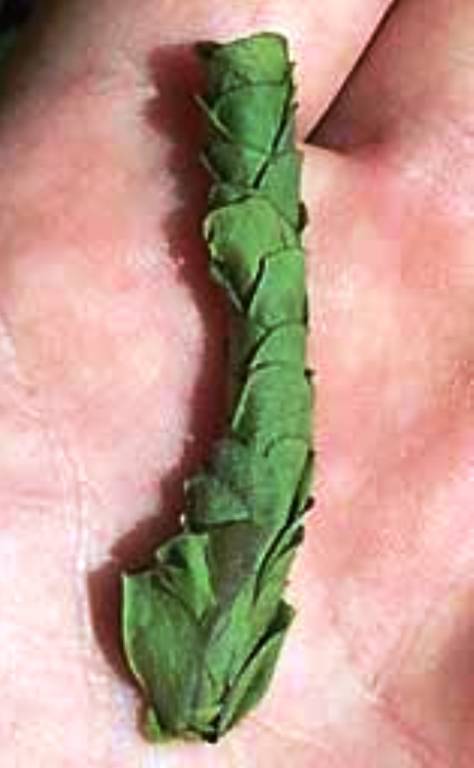
Below; Leaf cutter bees cocoons.
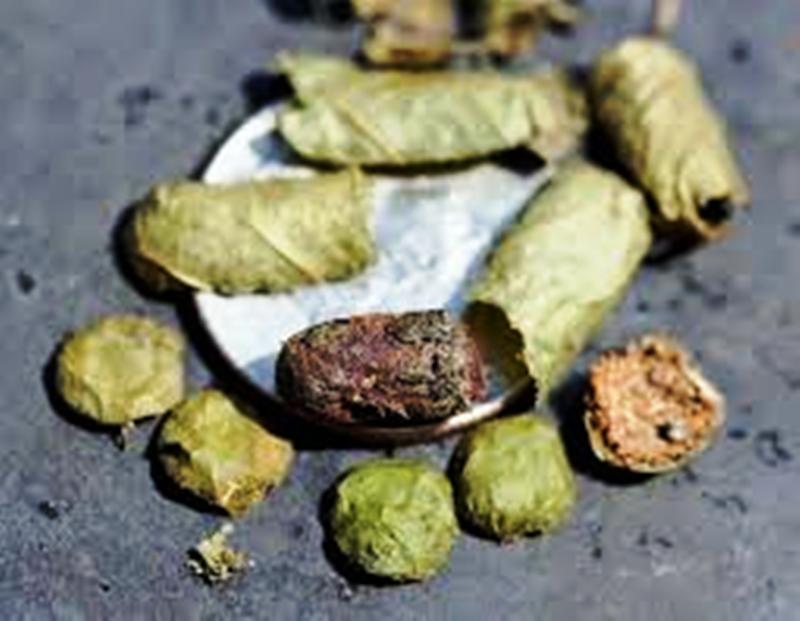
Breeding cycle continued.
The bee will give the female eggs she lays more pollen as the female is larger than the male.
The male egg is provided with less pollen to feed on. As male bee is smaller. The male bee
hatches first and once they mate with the females they die.
Female bees survive for several weeks and build their new nest again
They have a good temperament and do not sting as bad as a normal honey bee.
This is the tunnels they breed in; see as below.
The first tunnel represents how the leaf cutter bee builds, then the resin bee, then the mason bee with mud separations.
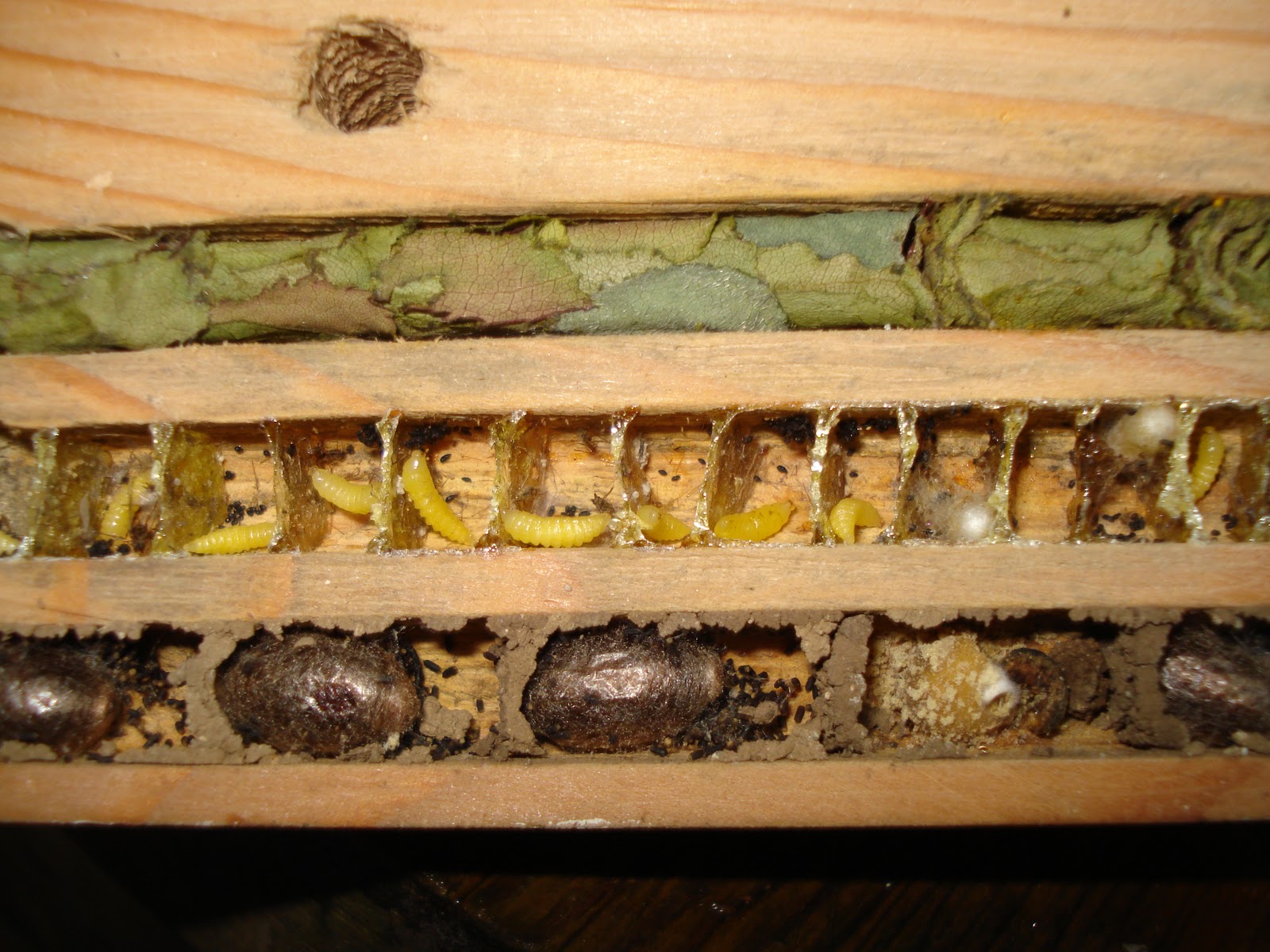
Pollinators
The leaf cutter bee is a very important and efficient pollinator bee.
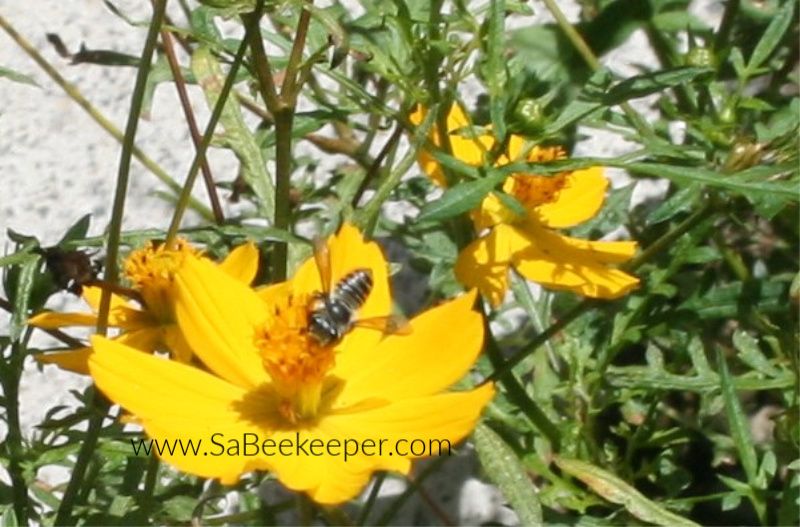
This bee is overlooked by bee keepers as it doesn’t produce honey or bees wax. An individual bee will visit a greater number of flowers than a normal honey bee, but are so much messier.
They lack the basket to keep the pollen secure and it drops off their abdomens, causing cross pollination of the flowers.
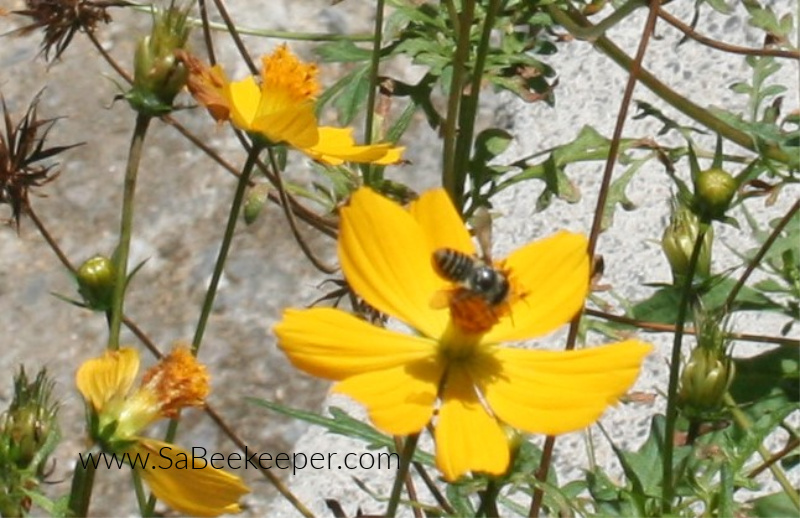
The bees are very hard workers and readily pollinate during lower temperatures, working longer hours.
So much more efficient pollinators than the honey bee. They are said to be the new pollinators on the block.
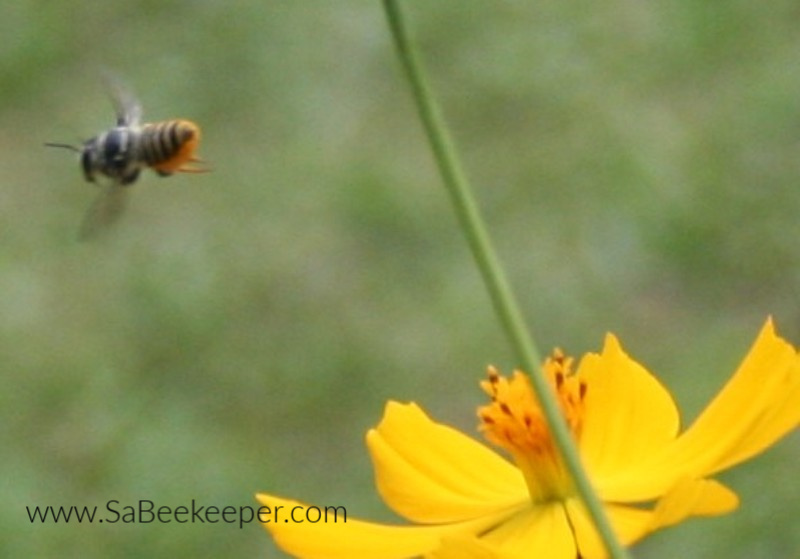
A beautiful view of the yellow abdomen of the leaf cutter bee. obtaining pollen on the cosmos flower.
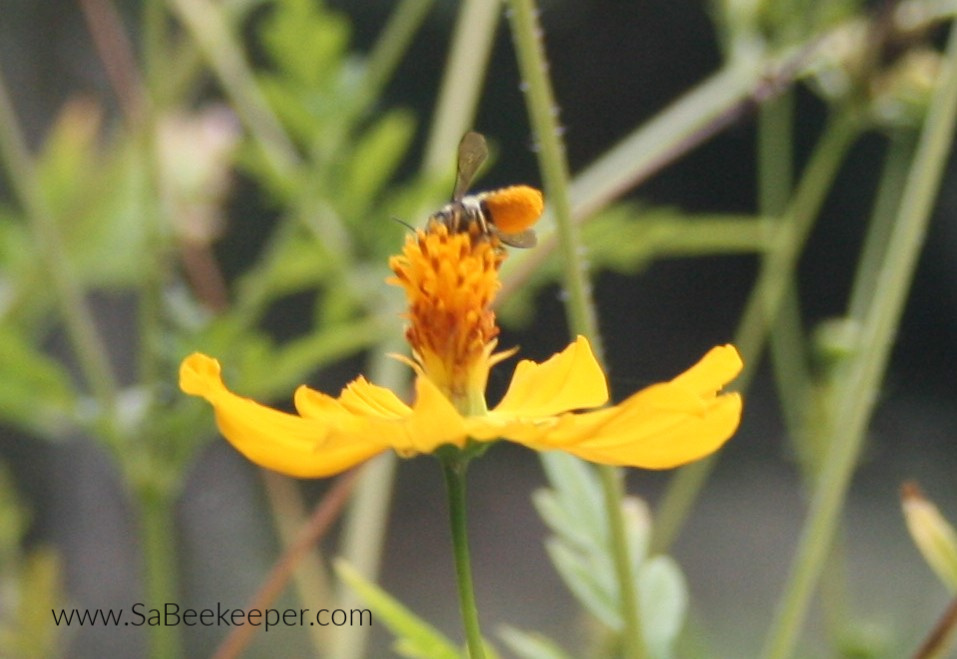
These leaf cutter bee was on my garden cosmos flowers in Vilcabamba, Loja, Ecuador.
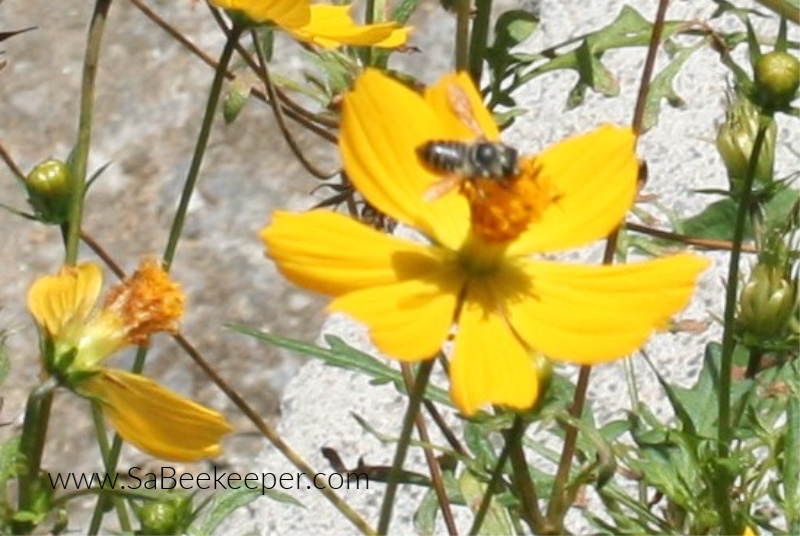
A butterfly on a cosmos flower.
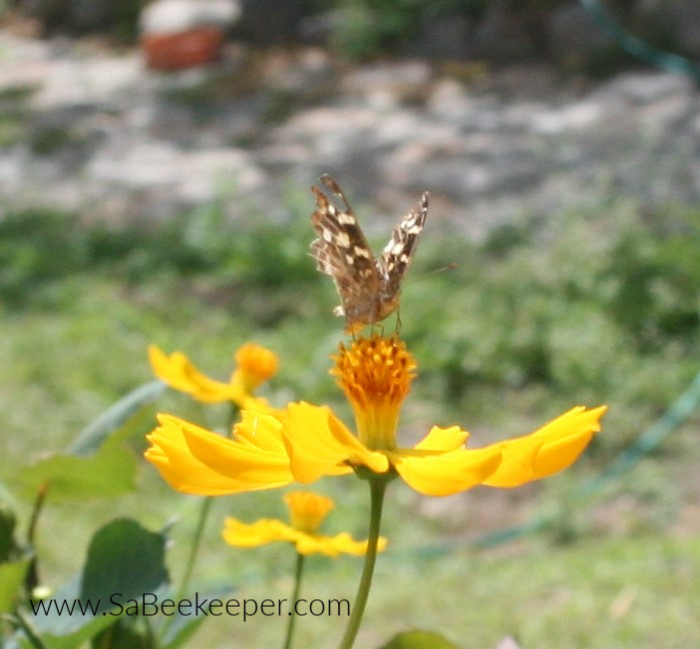
So the next time you come across some tubular leaf things, you should know that those are bees cocooned inside and are called the leaf cutter bee.
This site below tells us a how to make homes for the leaf cutter bee and how to preserve them during hibernation.
So great to find the leaf tunnels in my garden In KwaZulu Natal in South Africa. I found many in an ornament I had in the Garden . They were old and dried and I wasn’t sure what they were . I just hope the bees will come back and build their leaf tunnels again .
Please send me information on how to build homes for them .
Many Thanks
Tony Chapman
Hello,
You can have a look at this posts on, Homemade Solitary Bee Hotels are Necessary or What Bees Live in Bee Hotels.
On this site that will help you make a home for these solitary bees. enjoy
Heather